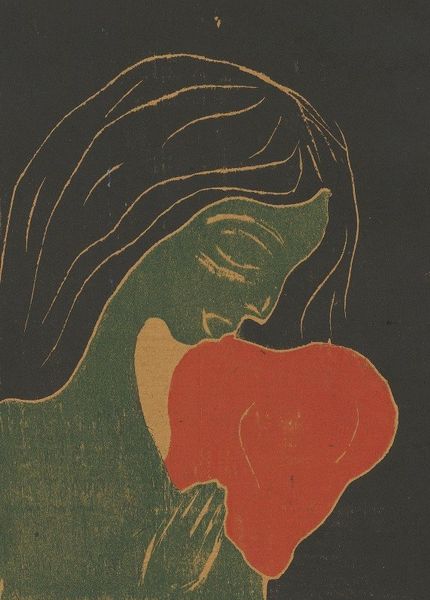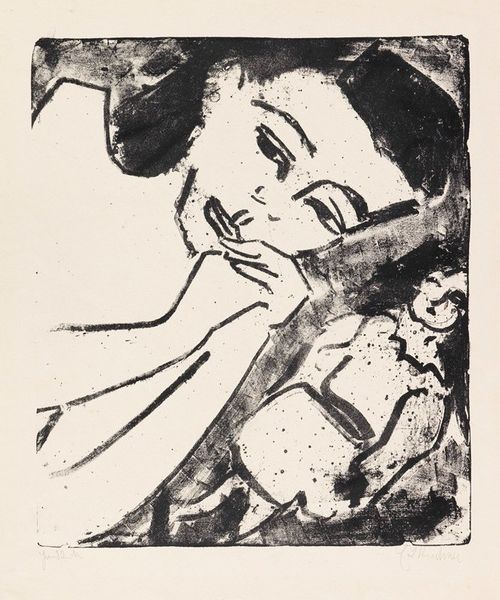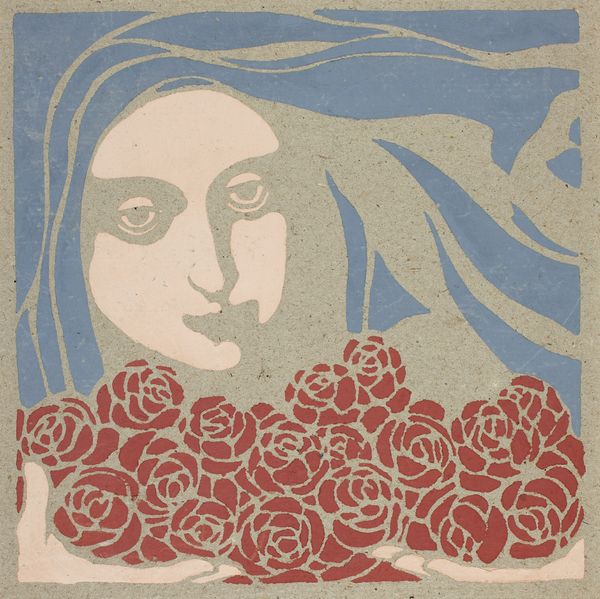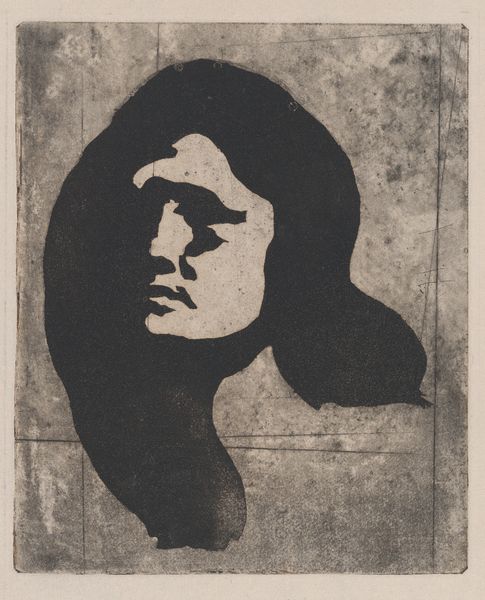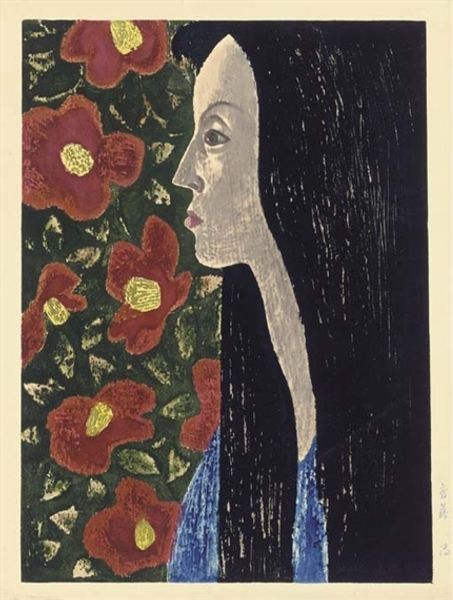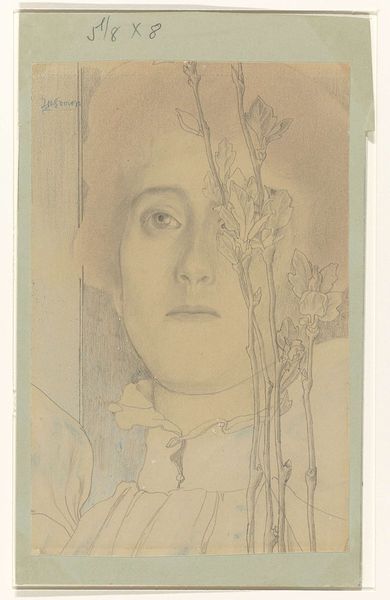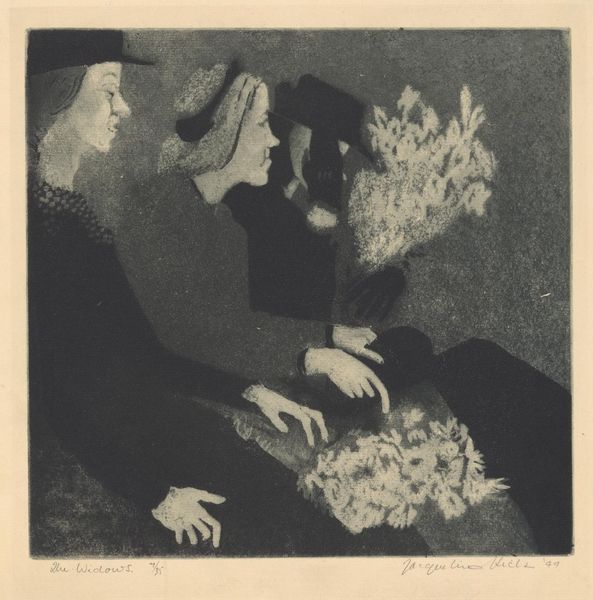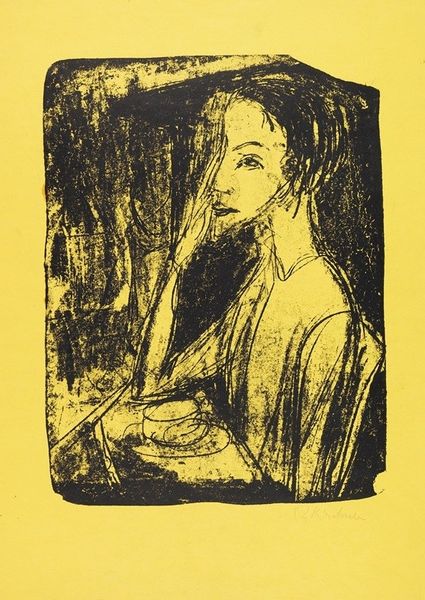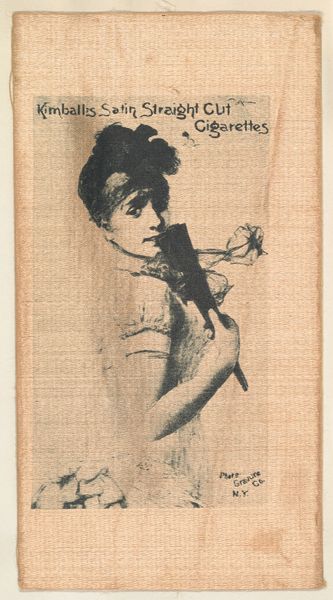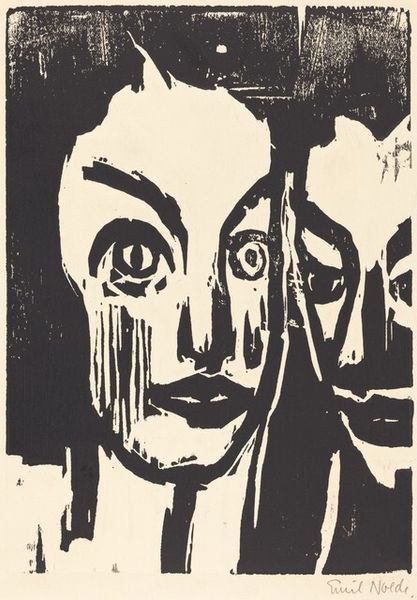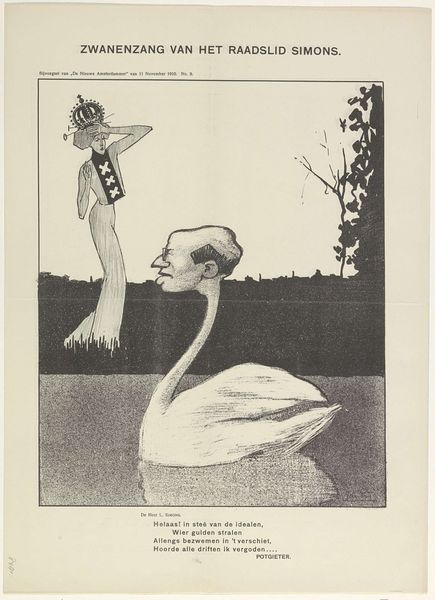
#
portrait
#
art-nouveau
# print
#
landscape
#
symbolism
Dimensions: 29 x 28 cm
Copyright: Public domain
Koloman Moser, a key figure in the Vienna Secession, created "Girl in Rose" using color woodcut, a technique that involves carving an image into a block of wood, inking it, and pressing it onto paper. This method, rooted in craft traditions, allowed Moser to produce multiple impressions, blurring the lines between fine art and commercial design. The choice of wood as a medium infuses the artwork with a tactile quality. The grain of the wood, though subtle, influences the texture of the print, adding depth and character. The process required skilled craftsmanship, each color applied separately, demanding precision. Woodcut, while capable of mass production, still retained a handmade feel, which would have resonated with the Secession's desire to connect art with everyday life. The laborious nature of woodcut is a counterpoint to the rise of industrial printing. Moser’s embrace of this technique suggests a conscious effort to value craft in an age of increasing mechanization, creating a dialogue between tradition and modernity. By emphasizing the hand-made, Moser elevates the status of craft, reminding us of the human effort behind every piece.
Comments
No comments
Be the first to comment and join the conversation on the ultimate creative platform.


